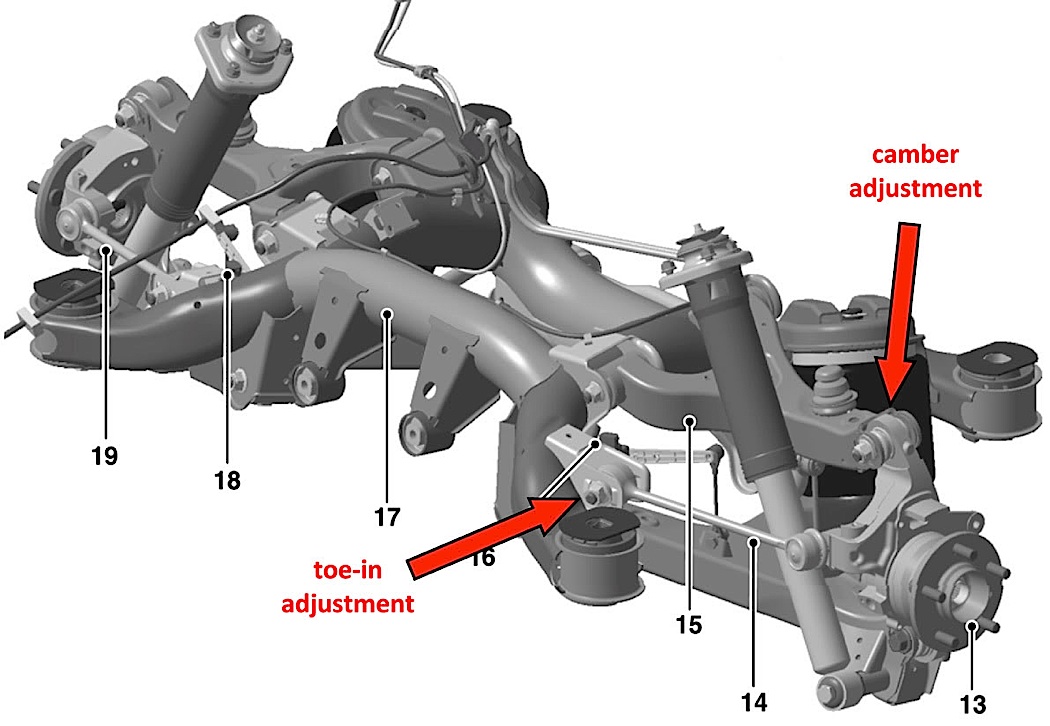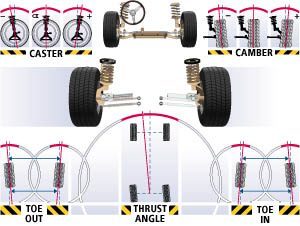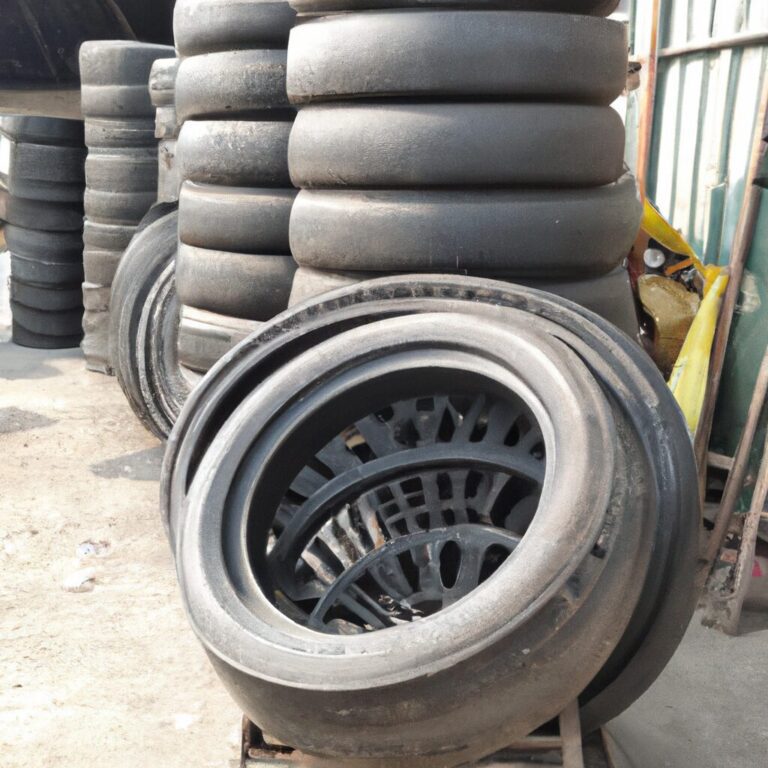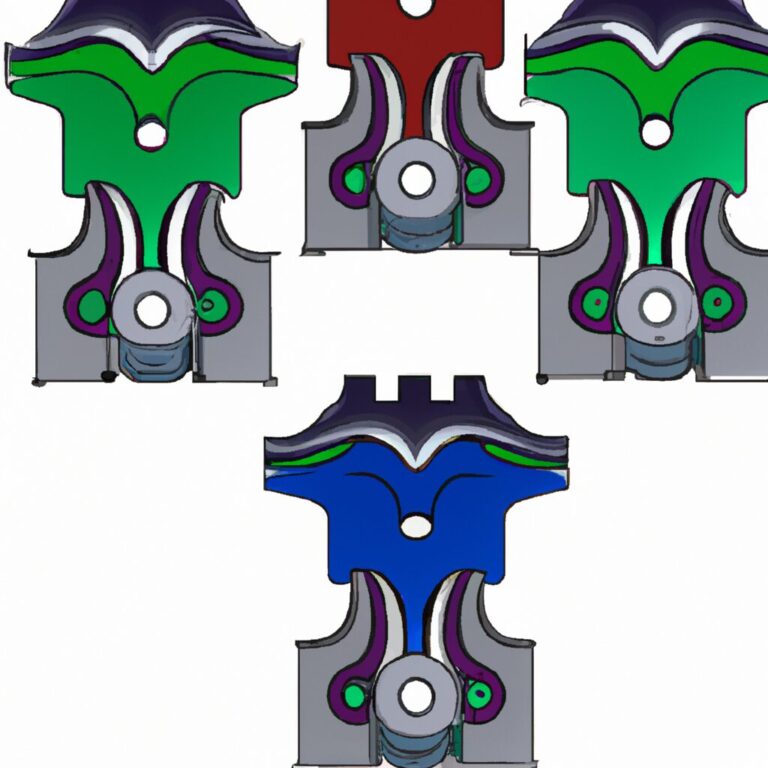How to Align Rear Wheels on a Car
To align rear wheels on a car, first, ensure tires are properly inflated and suspension components are sound. Then, use a laser alignment tool for accurate adjustments.
Proper alignment ensures optimal handling and reduces tire wear. When rear wheels are aligned correctly, your car will drive smoothly and safely, enhancing overall performance and stability. Follow these simple steps to align your rear wheels and enjoy a safer and more comfortable driving experience.
Regular wheel alignment maintenance is essential for the longevity of your vehicle and ensures optimal performance on the road. With proper alignment, you can improve fuel efficiency and avoid unnecessary wear and tear on your tires.

Credit: speed.academy
Importance Of Wheel Alignment
Wheel alignment is a crucial aspect of car maintenance that often goes overlooked. Proper alignment of the rear wheels plays a significant role in prolonging the life of your tires, improving fuel efficiency, and ensuring the safety and handling of your vehicle. Understanding the importance of wheel alignment can help you realize the benefits it offers to both your car and your wallet.
Improves Tire Life
Aligning the rear wheels of your car improves tire life by ensuring that they wear evenly. When the wheels are misaligned, excessive and uneven tire wear will occur, leading to premature replacements and additional expenses.
Improves Fuel Efficiency
Proper wheel alignment improves fuel efficiency by reducing rolling resistance. Misaligned wheels can cause the vehicle to work harder, resulting in increased fuel consumption and unnecessary expenses at the pump.
Enhances Vehicle Handling And Safety
Ensuring that your rear wheels are properly aligned enhances the handling and safety of your vehicle. It helps maintain stability, improves steering response, and reduces the risk of accidents caused by poor wheel alignment.
Signs Of Misaligned Rear Wheels
Signs of misaligned rear wheels can include uneven tire wear, drifting or pulling to one side, and a vibrating steering wheel. To properly align rear wheels on a car, it is recommended to seek professional help from a mechanic who can use specialized tools and equipment to adjust the camber, toe, and thrust angles.
Uneven Tire Wear
Uneven tire wear indicates misaligned rear wheels, leading to premature tire damage.
Pulling To One Side
Pulling to one side when driving can suggest rear wheels are misaligned, affecting vehicle handling.
Steering Wheel Vibrations
Steering wheel vibrations signal potential misalignment, causing discomfort while driving.
Ensure to address these signs promptly to prevent further damage.
Preparation And Tools Needed
Before aligning the rear wheels on your car, it is crucial to properly prepare and gather the necessary tools. This ensures a smooth and efficient alignment process.
Park The Car On A Level Surface
One of the first steps in aligning the rear wheels of your car is to park the vehicle on a level surface. This helps provide an accurate reference point for the alignment process.
Gather Necessary Tools
- Jack stands: For safely lifting the car off the ground.
- Wheel chocks: To prevent the car from rolling.
- Tape measure: For taking measurements.
- Adjustable wrench: To adjust the alignment settings.
- Level: To ensure the surface is flat.
- String or laser alignment tool: To aid in the alignment process.

Credit: kevinscarrepair.com
Adjusting Rear Wheel Alignment
To align the rear wheels on a car, start by checking the vehicle’s manufacturer guidelines for the correct specifications. Then, use a professional wheel alignment tool to make the necessary adjustments to ensure proper alignment and improve overall driving performance.
Regularly maintaining rear wheel alignment can contribute to enhanced vehicle stability and tire longevity.
Adjusting Rear Wheel Alignment Loosen the Rear Wheel Bolts To start aligning the rear wheels, first loosen the bolts that secure the rear wheels to the vehicle. Use a lug wrench to carefully loosen each bolt, making sure not to remove them entirely. Use a String Alignment Method To ensure the rear wheels are aligned correctly, utilize the string alignment method. This involves running a length of string from the rear of one wheel to the rear of the other, checking to ensure that the string runs parallel to the vehicle’s centerline. Adjust the Toe-In or Toe-Out With the string alignment method in place, you can proceed to adjust the toe-in or toe-out of the rear wheels. Make sure to refer to the vehicle’s specifications to determine the proper measurements for toe-in or toe-out. Make precise adjustments to the rear wheels, taking care to align them correctly according to the manufacturer’s specifications. This process may require trial and error, so take your time to ensure the rear wheels are aligned to perfection. By following these steps to adjust rear wheel alignment, you can help ensure proper handling and tire wear for your vehicle. Through careful adjustments and attention to detail, you can achieve optimal rear wheel alignment for a smoother, safer driving experience.Checking And Testing Alignment
When it comes to maintaining your car’s performance and safety, checking and testing the alignment of your rear wheels is crucial. Properly aligned wheels not only ensure smooth handling and better fuel efficiency, but they also prolong the life of your tires.
Tighten The Rear Wheel Bolts
Start by securely tightening the rear wheel bolts to avoid any inaccuracies in your alignment tests. Using the appropriate size wrench, tighten each bolt in a star pattern to ensure even distribution of torque. This step helps eliminate any potential wheel wobbling that may affect the accuracy of your alignment measurements.
Perform A Test Drive
After tightening the rear wheel bolts, it’s time to take your car for a test drive to further assess the alignment. Find a quiet road or parking lot where you can safely maneuver your vehicle.
- Before starting the test drive, visually inspect your tires for any signs of uneven wear, such as bald patches or worn edges. This can be an indication of misalignment.
- While driving, pay close attention to how your car handles. Does it pull to one side or have a tendency to drift? Is the steering wheel off-center when driving straight?
- If you notice any of these symptoms, it could mean that your rear wheels are misaligned. In that case, it’s recommended to consult a professional mechanic for a more accurate diagnosis and proper alignment.
By tightening the rear wheel bolts and performing a test drive, you can quickly check and evaluate the alignment of your car’s rear wheels. Regular checks and necessary adjustments will ensure optimal performance and driving safety, giving you peace of mind behind the wheel.

Credit: www.atlasspringservice.com
Frequently Asked Questions On How To Align Rear Wheels On A Car
Can You Do An Alignment On Rear Wheels?
Yes, alignment on rear wheels can be done to ensure proper vehicle handling and tire wear.
Can I Align My Wheels Myself?
Yes, it is possible to align your wheels yourself, but it requires skill and precision. It’s recommended to have a professional mechanic perform wheel alignment for accurate results.
How Do You Know If Your Rear Wheel Is Out Of Alignment?
You can tell if your rear wheel is out of alignment by observing uneven tire wear, shaking or vibrating while driving, and the vehicle pulling to one side. Be sure to check wheel alignment regularly to avoid potential safety and performance issues.
How Do I Align My Rear Axle?
To align your rear axle, follow these steps: 1. Park your vehicle on a level surface. 2. Measure the distance between the rear tires at the front and back. 3. Compare the measurements and adjust the alignment rods accordingly. 4. Ensure both sides have the same measurement for proper alignment.
5. Double-check the alignment by driving the vehicle and observing any deviations.
How Do You Align Rear Wheels On A Car?
Aligning the rear wheels on a car involves adjusting the suspension components to ensure they are parallel and properly positioned for optimal handling and tire wear.
Why Is It Important To Align Rear Wheels On A Car?
Aligning the rear wheels is crucial because it promotes even tire wear, improves fuel efficiency, enhances vehicle stability, and reduces the risk of premature suspension component failure.
What Are The Signs That Rear Wheels Need Alignment?
Unusual tire wear patterns, such as uneven or excessive wear on the inner or outer edges, steering wheel vibration, drifting or pulling to one side, and a crooked steering wheel when driving straight, are indications that rear wheels may need alignment.
Conclusion
In short, keeping rear wheels aligned is essential for optimal performance and safety. By following the steps outlined in this guide, you can ensure that your car maintains proper alignment, prolonging the lifespan of your tires and improving handling. Regular maintenance and alignment checks will keep your car running smoothly for the long haul.



